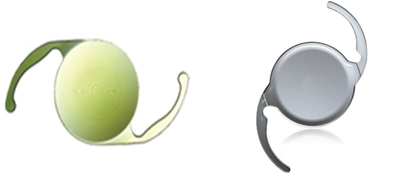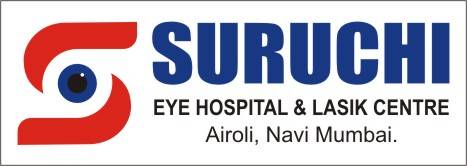Robotic Cataract Surgery in Navi Mumbai,Thane
SURUCHI EYE HOSPITAL HAS WORLD CLASS EQUIPMENT AND TECHNOLOGY
ROBOTIC CATARACT SURGERY in Thane with ALCON CENTURION PHACO SYSTEM, LEICA & LUMERA MICROSCOPES, ZEISS IOLMASTER 700 & VERION IMAGE GUIDED SYSTEM.



Q. What are Types of Cataracts?
Cataract Surgery can occur at any age. Cataract is usually aging process, senile cataract, occurring in the elderly, is characterized by an initial opacity in the lens, subsequent swelling of the lens and final shrinkage with complete loss of transparency. Moreover, with time the cataract cortex liquefies to form a milky white fluid in, which can cause severe inflammation if the lens capsule ruptures and leaks. Untreated, the cataract surgery in navi mumbai can cause glaucoma. Very advanced cataracts with weak zonules are liable to dislocation anteriorly or posteriorly.
These days we see cataract in lot of young patients.
Some children develop cataracts, called congenital cataracts, before or just after birth but these are usually dealt with in a unique way to cataracts in adults.
Cataract can develop after injury to the eye called Traumatic cataract. They are managed with exceptional care.
Cataract can develop due to some eye conditions like glaucoma, Uveitis, certain medicines like steroids and certain diseases like Diabetes they are called Secondary cataract. There primary cause must be managed well.

Q. What are symptoms of cataract?
Some common symptoms are- Blurry vision, Poor color perception, Glare, poor night vision, double vision or multiple images and frequent changes in glasses number, sometime pain due to raised eye pressure.
Early in the development of cataract distance vision decreases and changes in lens causes temporary improvement in near vision, which gives false impression to the patient that near vision is increasing, and the gradual yellowing and opacification of the lens may reduce the perception of blue colors. Cataracts typically progress slowly to cause vision loss and are potentially blinding if untreated. The condition usually affects both eyes, but always one eye is affected earlier than the other.
Q. What do do next?
Following examinations are done:
- Vision test
- Tonometry (Checking eye pressure)
- Dilated eye (retinal) examination
- B-scan (If required)
- Optical Biometry by Zeiss IOLMaster 700 (to check the precise power of Intraocular Lens to be implanted)
Treatment (Surgery)
Surgery is the only treatment, there is no other treatment, surgery is done by three methods:
1. Old Extracapsular surgery
Where a large incision (6 to 8 mm) is made to remove the cataract and large non-Foldable IOL (intraocular Implant) Is put in the eye. Sutures are taken, this takes long time to heal, and large incision causes more glasses number. All modern eye hospital doesn’t do this surgery anymore. Here injection is given to numb your eyes.
2. Modern PHACOEMULSIFICATION eye surgery
Where surgery is done through very tiny incision (2.8 mm) on the side of your cornea and a tiny probe is inserted in your eye and it breaks and softens the cataract by ultrasound waves and remove the cataract by suction. The latest foldable IOL (Intraocular Implant) is injected through this small incision. The whole surgery finishes fast, and no suture is required. Recovery is fast.

3. Latest MICS (Microincision cataract surgery)
With latest technology now we are doing cataract surgery through even exceedingly small (2.2 mm) incision and there are latest IOL (Intraocular Implants) which go through this tiny incision. Hence recovery is amazingly fast.
In modern day surgery we don’t use any injections. Surgery is done under eye drops and no eye bandage is put after surgery.
Risk & Complications
With advanced technology and good surgery, risk and complications are very less.
What is the cost of cataract surgery and Which lens to choose? IOL (Intraocular Implants)
Cost of cataract Surgery depends on the Technology used and IOLs (Intraocular Implants) used. IOLs are commonly called lenses. They are of two types:
1. Old type Non foldable IOL which are of rigid material – goes through large incision, not used in modern day surgery
2. Latest FOLDABLE IOLs/ lenses- Soft Acrylic material goes through small incision. they are of two types: Mono focal & Multifocal
Mono focal Foldable lenses: where your distance vision is corrected but you need to wear glasses for near vision. Among Mono focal ASPHERIC lenses gives you much sharper vision. Following figure shows few Mono focal lensesI
Quick Enquiry

PREMIUM TORIC LENSES can correct Astigmatism and are the Best among Mono focal lenses.
PREMIUM MULTIFOCAL/EDOF LENSES are latest premium lenses which decreases your dependency on near vision.
BIFOCAL/ TORIC BIFOCAL LENSES gives good distance vision and decrease dependency for near vision, Latest TRIFOCALS/ TORIC TRIFOCALS & EDOF/ TORIC EDOF LENSES are best, which gives good distance, intermediate vision and decrease dependency for near vision.

Lenses are of Hydrophilic material or Hydrophobic material. Hydrophobic lenses cause less posterior capsule opacification, so they are better.
Q. What happens on the day of surgery?
Your total stay at our eye Centre is two hours. It is fully Air Conditioned with extremely comfortable stay. Our staff takes diligent care of you. Post-operative instructions are told to you in detail.
Q. Will I need any procedure after cataract surgery in future?
Months to years after cataract surgery your eye tissue which supports lens may become cloudy (posterior capsular opacification) and blur your vision. Whenever this happens it can be treated by painless small OPD procedure called YAG Laser capsulotomy. This happens less in Hydrophobic lenses.
Q. Why choose us for your cataract surgery
SURUCHI EYE HOSPITAL is providing Latest technology in Cataract surgery with Premium Foldable Lenses.
We are equipped with modern operating theatre, Microscope, Phaco machine & very efficient staff which will make your experience pleasant.
We Have world class IOL MASTER 700, LEICA & LUMERA Microscopes, VERION IMAGE GUIDED SYSTEM, INFINITI VISION SYSTEM, ROBOTIC ZEPTO CATARACT SYSTEM.
There is no injection, no suture / stitch or eye bandage. You can resume your work fast.
Our Goal is to treat every patient as if they are our family member and bring smile to their face.

WE CARE FOR QUALITY
Dr RAJESH KAPOOR
Medical Director, Suruchi Eye Hospital & Lasik centre
FAQS FOR SURUCHI EYE HOSPITAL
The duration for resuming your usual activities post-cataract surgery can fluctuate based on individual circumstances and the tailored guidance from your ophthalmologist.
Typically, patients can resume most daily activities within a few days to a week after surgery, but following your doctor’s recommendations carefully is essential.
Your ophthalmologist might recommend refraining from vigorous activities, lifting heavy objects, or swimming for a specified duration to promote optimal healing.
Consult with Dr. Rajesh Kapoor, a leading and highly experienced ophthalmologist in Suruchi Eye Hospital , for personalized guidance regarding your post-operative recovery timeline.
Following cataract surgery, the likelihood of cataracts recurring is minimal since the cloudy lens is replaced with a permanent artificial intraocular lens (IOL). However, there’s a possibility of experiencing posterior capsule opacification (PCO) months or years later.
PCO, a clouding of the lens capsule, may resemble cataract symptoms but is distinct. Fortunately, it can be swiftly resolved with a painless laser procedure called YAG laser capsulotomy, restoring clear vision.
Cataract surgery is conducted without pain, usually under Topical anesthesia using eye drops. This anesthesia numbs the eye , guaranteeing patients a painless and comfortable surgical experience.
Mild discomfort or pressure may sometimes be experienced, but this is usually well-tolerated. Suppose you have any concerns about pain or discomfort during cataract surgery.
In that case, it’s essential to discuss them with your eye surgeon beforehand so they can address them and ensure your comfort during the procedure.
Although cataract surgery is generally safe, it carries potential risks such as infection, inflammation, swelling, retinal detachment, increased intraocular pressure, and secondary cataracts.
Before the procedure, it’s vital to discuss these risks with your surgeon to ensure you’re fully informed and address any apprehensions. Your surgeon will implement measures to mitigate these risks and optimize the likelihood of a successful outcome.
After cataract surgery, it’s generally recommended that you avoid driving until your vision has stabilized and your eye surgeon has given you clearance.
For numerous patients, this occurs within a day or two post-surgery. However, individual timelines may differ based on surgical approach, potential complications, and the body’s unique healing capabilities.
Following your surgeon’s instructions regarding driving and other activities is essential to ensure your safety and the best possible outcome. If you have any concerns about driving after cataract surgery, discuss them with your surgeon.
While cataracts are often linked with older age, they can affect individuals of all ages.
Although age-related cataracts are common, they can also arise from various other factors such as trauma, certain medications, systemic diseases like diabetes, congenital conditions, or genetic predispositions.
Lifestyle choices like smoking, excessive sunlight exposure, and inadequate nutrition may also play a role in cataract development at any age.
However, age remains the primary risk factor, and the likelihood of developing cataracts increases as you get older.
Whether you’ll require glasses after cataract surgery depends on the type of intraocular lens (IOL) inserted and your specific visual needs.
Mono focal IOLs furnish sharp vision at a single distance, frequently necessitating glasses for either reading or distance tasks.
Multifocal/Accommodating IOLs reduce dependence on glasses, but some activities may still require them. Astigmatism-Correcting IOLs address astigmatism but may not eliminate all glasses needs. Your surgeon will guide you based on your lifestyle and preferences.
Cataracts and presbyopia, while distinct, often impact vision as individuals age. Cataracts cause cloudy vision due to lens opacity, while presbyopia affects near vision by reducing lens flexibility. Though separate, they commonly coexist in aging eyes.
Cataract surgery offers the opportunity to tackle both conditions simultaneously by substituting the cloudy lens with a transparent intraocular lens (IOL), which may rectify presbyopia.
Cataracts do not spread from one eye to the other. Each eye is independent, and the development of a cataract in one eye does not directly influence the other.
However, it is common for individuals to develop cataracts in both eyes, especially as they age. The progression of cataracts can vary between eyes, with one eye potentially experiencing faster or slower development compared to the other.
If you observe cataracts in one eye, like blurry vision or sensitivity to glare, promptly schedule a comprehensive eye examination to evaluate both eyes’ health and plan the necessary steps.
Blinking is generally not a concern during a cataract operation as the eye is typically held open with a speculum, which prevents blinking.
Additionally, the surgeon may administer eye drops or use an anesthetic to numb the eye and reduce the urge to blink. However, if a patient blink unexpectedly during surgery, it could disrupt the surgical procedure.
To minimize the risk of blinking, patients are usually instructed to keep their eyes still and open as much as possible throughout the surgery. The surgical team is equipped to manage such occurrences and will implement strategies to safeguard the procedure’s efficacy and safety.
Suruchi Eye Hospital, a premier eye center in Navi Mumbai, delivers exceptional and compassionate ophthalmic care.
Suruchi Eye Hospital has a team of expert professionals, who offer comprehensive services, including advanced diagnostics and cutting-edge treatments. Committed to excellence, the hospital utilizes state-of-the-art technology in a patient-centric environment.
Whether for routine vision concerns or complex surgeries, Suruchi Eye Hospital prioritizes superior eye health with a focus on quality. Schedule your appointment today for unparalleled care.

